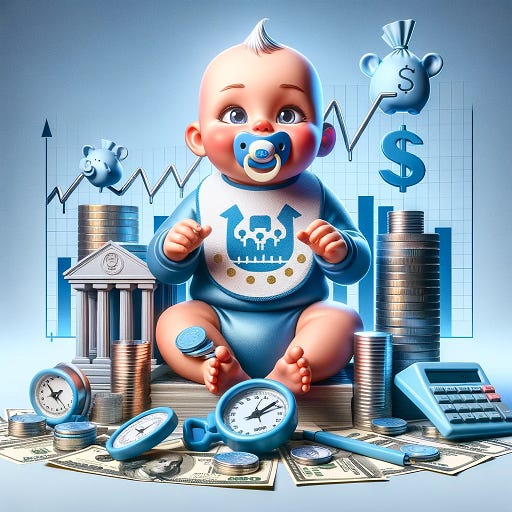Reviewing Scott's Final Trade for 2023
Scott had one trade in the last week of 2023. We don’t cover the investment, but it was still in his disclosures. The trade was closing out a position in one of the baby bonds.

- The baby bond is ECCW: (ECCW) .
- It is issued by Eagle Point Credit Company (ECC) .
This is Scott’s note:
I sold my entire position in ECCW at a weighted average sales price of $24.17 per share. This was one of those very minor positions that, at the time, was to generate a consistent income stream (which was accomplished). In the end, ECCW was not one of my "great" trades but considering the "ups and downs" of this position during the recent interest rate cycle, I'm ok with the ultimate outcome. For me, it was a good time to close out this very minor position. As such, I am merely disclosing my personal trade here today (will not fit each and every investor's strategy). In the end, my weighted average total return on my ECCW position was 10.6%. I held this position for a weighed average of 30 months (only an annualized return of 4.3%). No definitive thoughts on where to redeploy this capital yet. I hope this helps with subscribers' assessments/strategies.
That position was opened in June 2021.
It isn’t a huge annualized rate of return, but it isn’t bad for a bond during that time period. It’s a bit better than someone would’ve achieved sitting in cash (because cash yields were low early on). It’s also much better than someone would’ve achieved if they had purchased a 2.5-year Treasury at the time.
Treasury Comparisons
The 2-year Treasury yield at that point was about 0.26%.
The 3-year Treasury yield at that point was about 0.47%. An investor in the 3-year Treasury from that date would still have a negative total return on their position because the remaining 6 months would need a yield of nearly 5% annualized. Therefore, someone who bought a 3-year Treasury at that date would have about 1.18% in interest income and a bond worth about 98% of face value. That investor would have a negative total return of about 0.8%.
In that light, earning 10.6% on a bond investment over about 2.5 years isn’t too bad. You just have to consider when the specific 2.5-year period began.
For reference, the coupon rate was 6.75%. The sale price was lower than the purchase price, but the difference was far more than offset by the income.
The goal wasn’t to earn a huge return on this position. It was to generate some stable income and get a respectable yield when Treasury yields were still materially under 1%.
Corporate Bond Comparison
What if he went the more typical route for income investors and bought something like the SPDR Bloomberg High Yield Bond ETF (JNK) .
That had a higher yield than Treasuries. Perhaps his choice only outperformed because it had a higher yield.
No, that is wrong.
JNK delivered a total return of 0.29% over that period. The price declined 13.49%, but the dividend payments were just large enough to drive the total return positive.
Note: This assumes the dividends were reinvested (which boosts the returns in this case).
How about using a different bond ETF. The Schwab US Aggregate Bond ETF (SCHZ) gives us a big sample of bonds. The total return on SCHZ was negative 8.23% over that period.
Conclusion
All around, it was about as good of a choice as you could ask for within the realm of bonds. It was simply a rough period for bond investors as rising interest rates reduced the value of existing bonds. To achieve even 10.6% during that period is pretty favorable when you consider the average performance for bond investors (which is best approximated by huge bond ETFs).
Our weekly article will be coming out soon.

Member discussion